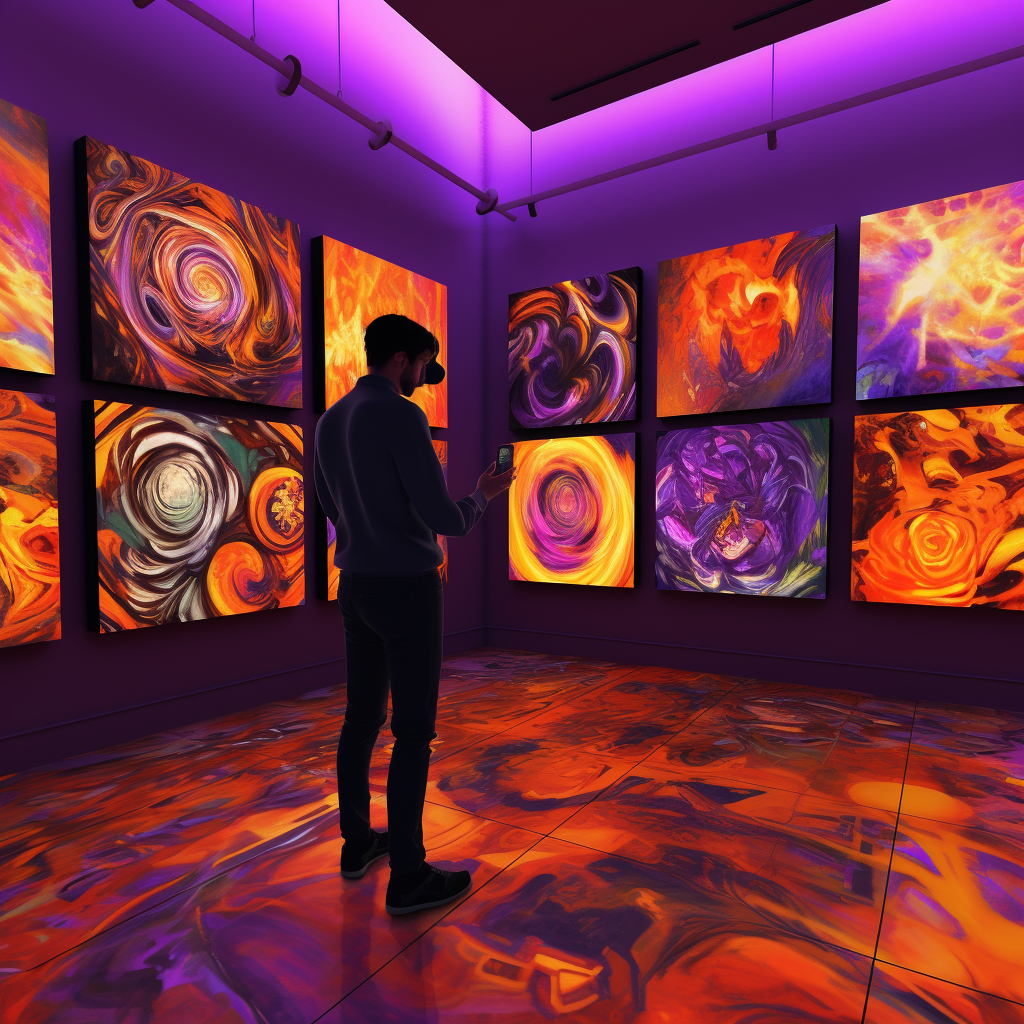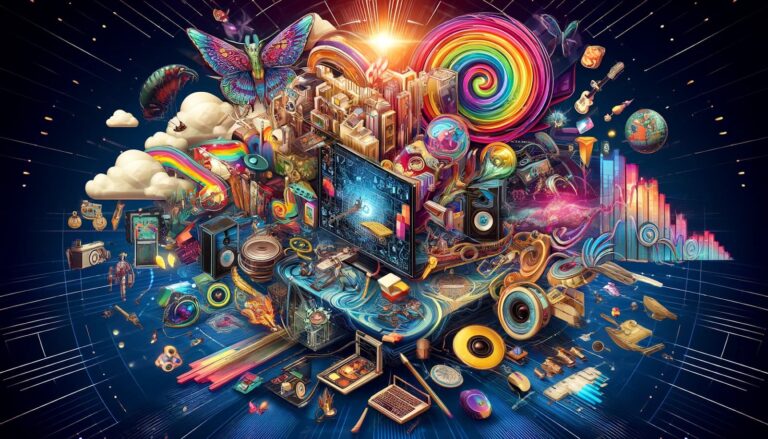In the rapidly evolving digital landscape, the intersection of digital art and non-fungible tokens (NFTs) has sparked a transformative movement. This fusion is redefining how art is created, owned, and traded, offering unprecedented opportunities for artists and collectors alike. As we delve into this dynamic realm, we’ll explore the essence of digital art, the mechanics of NFTs, and their collective impact on the future of creativity and ownership.
A. Understanding Digital Art and NFTs
1. What is Digital Art?
Digital art encompasses creations produced or presented using digital technology. This includes a wide array of forms such as digital paintings, 3D models, animations, and interactive installations. Unlike traditional art, digital art exists in a virtual space, allowing for innovative expressions and global accessibility.
2. Demystifying NFTs
Non-fungible tokens (NFTs) are unique digital assets verified using blockchain technology. Each NFT contains distinct information, making it irreplaceable and providing proof of ownership and authenticity for digital items. This technology has revolutionized the way digital art is bought, sold, and collected.
B. The Synergy Between Digital Art and NFTs
The integration of NFTs into the digital art sphere has introduced a paradigm shift in how art is perceived and valued.
1. Empowering Artists
-
A. Direct Monetization: Artists can sell their work directly to collectors without intermediaries, retaining a larger share of the profits.
-
B. Royalties: Smart contracts enable artists to earn royalties from secondary sales, ensuring ongoing revenue.
-
C. Global Reach: Digital platforms allow artists to showcase their work to a worldwide audience, breaking geographical barriers.
2. Enhancing Collectibility
-
A. Provenance: Blockchain records provide a transparent history of ownership, enhancing trust and value.
-
B. Scarcity: Limited edition NFTs create a sense of exclusivity, increasing demand among collectors.
-
C. Interactivity: Some NFTs offer interactive experiences, adding a new dimension to art appreciation.
C. Navigating NFT Marketplaces
Several platforms have emerged as hubs for NFT transactions, each catering to different niches within the digital art community.
1. OpenSea
As one of the largest NFT marketplaces, OpenSea offers a vast array of digital assets, including art, music, and virtual real estate.
2. Rarible
Rarible empowers artists by allowing them to mint NFTs without coding knowledge, fostering a decentralized art economy.
3. Foundation
Foundation focuses on high-quality digital art, providing a curated platform for artists and collectors seeking premium pieces.
D. The Broader Implications of NFTs
Beyond the art world, NFTs are influencing various sectors, indicating a broader shift towards digital ownership.
1. Gaming Industry
NFTs are used to represent in-game assets, allowing players to own, trade, and monetize their virtual items.
2. Music and Entertainment
Musicians and creators are leveraging NFTs to distribute exclusive content, engage with fans, and generate new revenue streams.
3. Real Estate and Virtual Worlds
Virtual real estate in metaverse platforms is being bought and sold as NFTs, indicating a new frontier in property ownership.
E. Challenges and Considerations
While NFTs offer exciting opportunities, they also present challenges that need to be addressed.
1. Environmental Concerns
The energy consumption of blockchain networks has raised environmental issues, prompting the need for sustainable solutions.
2. Market Volatility
The NFT market is subject to fluctuations, and the speculative nature can pose risks for investors and artists.
3. Legal and Ethical Issues
Questions around copyright, intellectual property rights, and authenticity are ongoing concerns in the NFT space.
F. The Future Outlook
The trajectory of digital art and NFTs suggests a continued evolution, with potential developments including:
-
A. Integration with Augmented Reality (AR) and Virtual Reality (VR): Enhancing immersive art experiences.
-
B. Expansion into Education: Utilizing NFTs for educational content and certifications.
-
C. Greater Accessibility: Developing user-friendly platforms to democratize NFT creation and ownership.
Conclusion
The convergence of digital art and NFTs is reshaping the creative landscape, offering new avenues for expression, ownership, and economic empowerment. As technology advances and adoption grows, embracing this digital renaissance can unlock unprecedented possibilities for artists and collectors worldwide.













